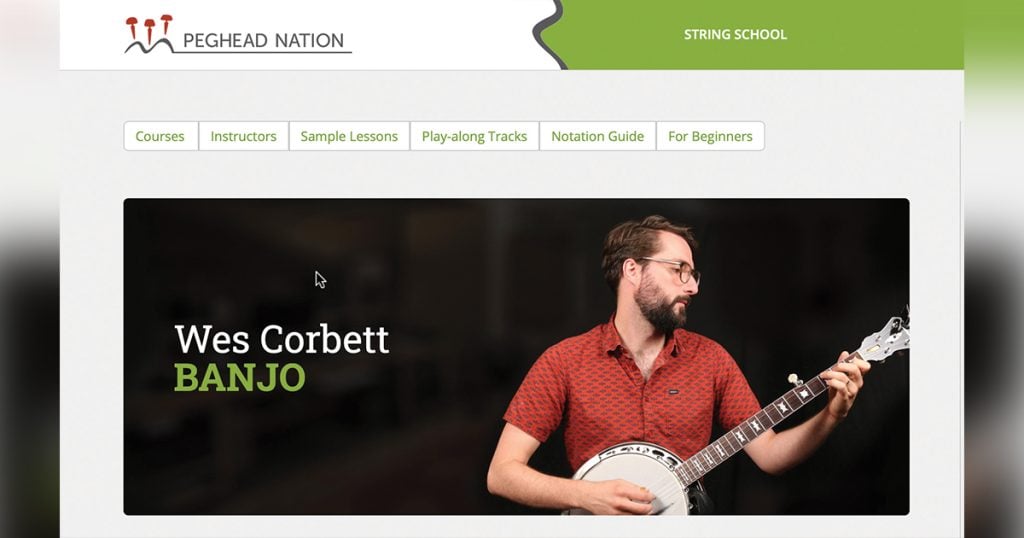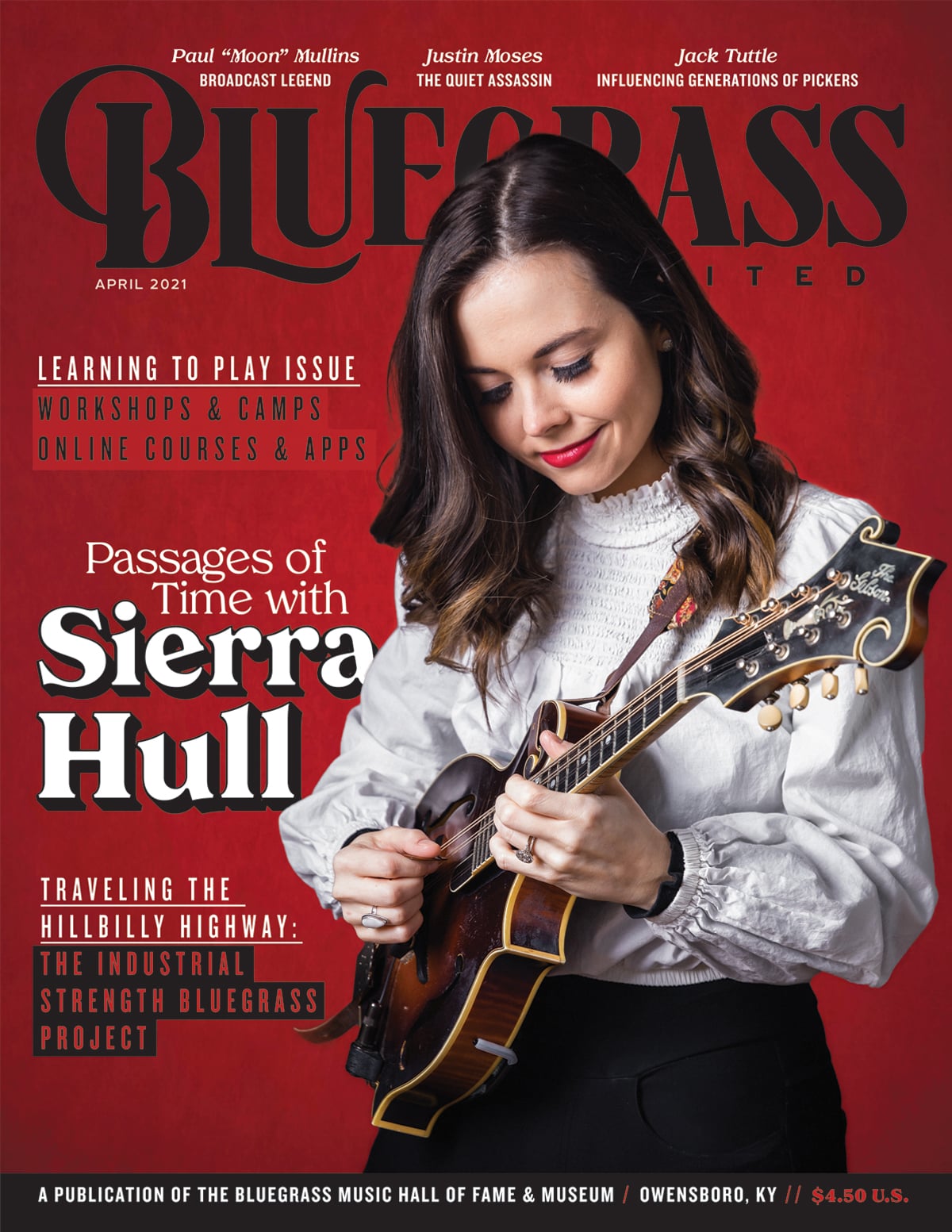Wes Corbett Peghead Nation Course
“The thing to think about with playing music and with playing an instrument is that whatever box you’re putting yourself in is the one you’re going to be able to create in,” Wes Corbett tells his students in Peghead Nation’s Contemporary Bluegrass Banjo course. Corbett is a former banjo professor at Berklee College of Music and currently a member of the Sam Bush Band. As this course shows, he is clearly someone who has done a lot of thinking about the banjo fingerboard, tone production, musicality, and the relationship of body mechanics to playing.
In this six-hour streaming video course, Corbett offers intermediate and advanced players lots of different boxes to explore, from a deep-dive into single string technique, to harmonized scales, to a discussion and demonstration of a classic J.D. Crowe solo, to a section on improvising over a tune. The lessons vary in length. Some are quite short—two to three minutes. Others run up to 25 minutes. Generally, the lessons focusing on technique are grouped into logical units and sequenced in ways that could be helpful to follow, with certain techniques and skills building on others.
Corbett’s teaching is noteworthy for its relaxed clarity, and for the way he brings ideas from his own musical experiences into the curriculum. Teaching the fiddle tune “Leather Britches,” Corbett explains how to develop the connection between your hands and your ears by singing melodies. He has students sing the melody to “Leather Britches” along with him as part of the lesson. “It’s an interesting thing,” Corbett says at one point in the course, “the connection between your ear and your hands. And for me it’s kinda the most crucial thing.”
At another juncture, Corbett explains how a discussion with Punch Brothers banjoist Noam Pikelny changed his approach to single-string playing. Corbett then demonstrates this approach in detail and talks about how reconceptualizing the relationships between chord shapes and single string scales made it possible to play single string fluently over most of the fretboard. Downloadable PDF tab sheets are provided for all lessons, and MP3 backing tracks for the tunes can be downloaded as well.
Players following the default order of the lessons will probably find themselves in familiar territory at the outset. Corbett offers his take on basic three-finger rolls, major, minor and seventh chords, and then presents a section on “Cripple Creek,” showing how you can take a tune you know and add variations and improvisations.
At this point we are off to the races and being introduced to harmonized scales, single string playing, guide tone shapes, melodic style, forward roll playing in the style of Ron Block and more. Many of these ideas and concepts are then folded into tunes and exercises. The lessons on using Guide Tones in chord voicings and scale harmonizing were eye and ear opening for this writer. Those sections in particular struck me as outstanding teachings in connecting music theory to hands-on playing and listening.
For players interested in adding to their repertoire, Corbett adds some interesting twists to tunes like “Arkansas Traveler.” He takes “Chinquapin Hunting” and shows how to play it in three different keys, offering an excellent introduction to transposing, and for those interested in straight-ahead bluegrass, he covers J.D. Crowe’s break in “Come Back To Me Little Darling,” commenting on the finer points of what Crowe does to achieve his sound.
If some of the playing goes by too quickly, video can be slowed down to 75 and 50 percent of its original speed to catch the subtleties of Corbett’s demos. The web site design is clean and uncluttered, making for a friendly viewing experience with a feature that allows you to keep track of what you’ve already watched. In addition, subscribers to the course get access to a library of supplementary learning materials and jam tracks.
Explanations of various techniques understandably make up most of the course, but Corbett also hones in on “intentionality,” and how to practice. Why do you play music? What is the relation between the way you approach learning, practicing and playing? What are some ideas for practicing with a metronome? How can you work on playing with less tension in your body?
Corbett continues to add content to the course, including sections on how to play the banjo parts on two of the tunes from his recently released album Cascade. He provides lucid and helpful details of how adjustments to particular banjo components might affect an instrument’s sound.
The Peghead Nation course is delivered via streaming video, so it requires that students have an internet connection and a way to browse the web.

